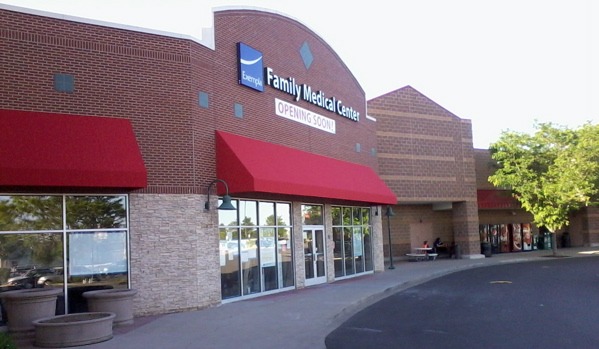
This article, the first in a series of upcoming posts covering the complex U.S. healthcare system and its relationship to the story of need, attempts to briefly highlight how the system developed and how it currently functions (and malfunctions).
The basics
In between birth and death, people have their health. Some do a better job than others maintaining it. Sometimes a person’s health is threatened through no fault of his or her own. Pretty much everyone at some point gets sick or hurt or needs surgery for something. In order to get better or heal or recover, and whether or not they choose alternative or traditional treatment, people generally visit a doctor, stay in a hospital or pick up some sort of medication. Sometimes they do all of the above. Of course, for doctor visits, hospital stays and prescription medication to be available there need to be doctors, nurses, technicians, attendants, pharmacists and researchers. Thus our society’s many-layered process for medical training and certification.
So, we have the supply side generally referred to as the medical profession, and we have the demand side that includes various kinds of patients and prospective patients.
An extra layer or two
Due to wage controls instituted by the U.S. government during World War II, employers began to attract employees, that is, patients and prospective patients, with benefit packages that included health insurance. The advent of employer-based health insurance packages eventually made insurance companies the mediators of rates charged to patients by medical providers, and the facilitators of patients’ payments to providers. Insurance companies continue to fill that role for the majority of people in the United States, whether through employer-based or non-employer-based policies.
Many in one
Health care in the United States hinges on the question, “Who foots the bill for services?” Practically speaking, health care today works off of two different payment systems: government insurance and private health insurance.
There are three main types of government insurance: Medicare, Medicaid and military health care. The U.S. government created Medicare and Medicaid in the 1960s. Medicare is a social insurance program for two groups of people: those 65 or over and those with long-term disabilities. It has three parts: hospital insurance, medical insurance and a prescription drug plan. Medicaid is a social welfare program that provides health coverage for individuals and families with low income and few resources. Military health care includes a health system for active-duty members of the U.S. military and their dependents, and VA Health Care, a portable, comprehensive and integrated program for enrolled U.S. military veterans and their eligible dependents.
There are many private health insurance companies and myriad plans on the market today. Usually they require the insured to pay a combination of premiums, co-pays and deductibles to maintain coverage. The insurance company then contracts discounted rates with medical providers. Some of these plans are employer-based and some are purchased directly from an insurance company. According to a recent Gallup poll, over the last several years the percentage of Americans who receive their health insurance through an employer has steadily declined.
The recent Census Bureau report, “Income, Poverty, and Health Insurance Coverage in the United States,” found that 64 percent of Americans were covered by private health insurance in 2010. Fifty-five percent of Americans had employment-based insurance and 9.8 percent had “direct-purchase” plans.
At the same time, 31 percent of Americans were covered by some form of government insurance. Sixteen percent of Americans were covered by Medicaid, 14.5 percent were covered by Medicare and 4.2 percent were covered by military health care. (The percentages don’t add up exactly because some people have more than one kind of health insurance.)
Major problems?
In a November 2011 Gallup Poll, three out of four Americans said U.S. healthcare has major problems or is in crisis. The bullet points below identify a few of those problem areas:
- The number of uninsured — An online study referenced by David Morgan of Reuters found that one in four working-age Americans did not have health insurance at some point in time last year. By comparison, the U.S. Census Bureau said 16.3 percent of Americans or 49.9 million people did not have health insurance in 2010, while 256.2 million did have health insurance.
- Low reimbursements for providers — Many physicians are forced to discontinue accepting Medicare patients, for example, because of the low rates at which the federal government reimburses them.
- Malpractice insurance — The cost of malpractice insurance increases the financial burden of practicing medicine and threatens proper doctor-patient care.
- Eating up personal budgets — Health care spending as a percent of personal consumption increased from 9.5 percent in 1980 to 16.3 percent in 2010, according to data from the Bureau of Economic Analysis.
- The cost of insurance premiums — Statistics compiled by The Commonwealth Fund show that insurance premiums have increased three times as fast as wages in the past decade. Insurance companies also institute regular premium hikes to offset costs.
- Bankruptcies — According to a CNN article, medical bills caused an estimated 900,000 bankruptcies or 60 percent of all U.S. bankruptcies as of 2009. A national bankruptcy study published in 2009 in the American Journal of Medicine, found the percentage of bankruptcies with a medical cause to be just over 62 percent.
There are many more problem areas in U.S. healthcare besides the ones summarized above, including the inaccessibility of health care for some, misuse of emergency rooms for primary care purposes, overcharging by medical facilities and insurance abuse, but exhaustively detailing all the shortcomings of the current system is beyond the scope of this article.


